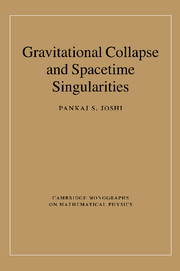2 - The spacetime manifold
Published online by Cambridge University Press: 15 August 2009
Summary
Here, the essential fundamentals of general relativity and related mathematical aspects are described. For further details, see texts such as Weinberg (1972), Misner, Thorne, and Wheeler (1973), and Wald (1984). Other necessary techniques are developed in later chapters as necessary. While defining vectors, tensors, and other quantities, we use both a local and a coordinate free global approach, and indicate how to make a transition from one to the other representation, which is useful in several situations.
In Section 2.1 the manifold model for spacetime is introduced. Basic definitions of a differentiable manifold, and various topological and orientability properties are discussed. The metric tensor and related aspects are considered in Section 2.2, and the connection on a spacetime is considered in Section 2.3. Timelike and null geodesics play a basic role in the considerations here on gravitational collapse. These are a special set of non-spacelike trajectories that represent the motion of freely falling material particles and light rays, and they clarify many properties of a spacetime. These are discussed in Section 2.4. The spacetime curvature is considered in Section 2.5, and the Einstein equations governing the dynamics of matter in the spacetime are discussed in Section 2.6. Many exact solutions have been found to the Einstein equations so far; however, the Schwarzschild and Vaidya geometries are particularly relevant to gravitational collapse scenarios, and Section 2.7 discusses these.
- Type
- Chapter
- Information
- Gravitational Collapse and Spacetime Singularities , pp. 10 - 59Publisher: Cambridge University PressPrint publication year: 2007



